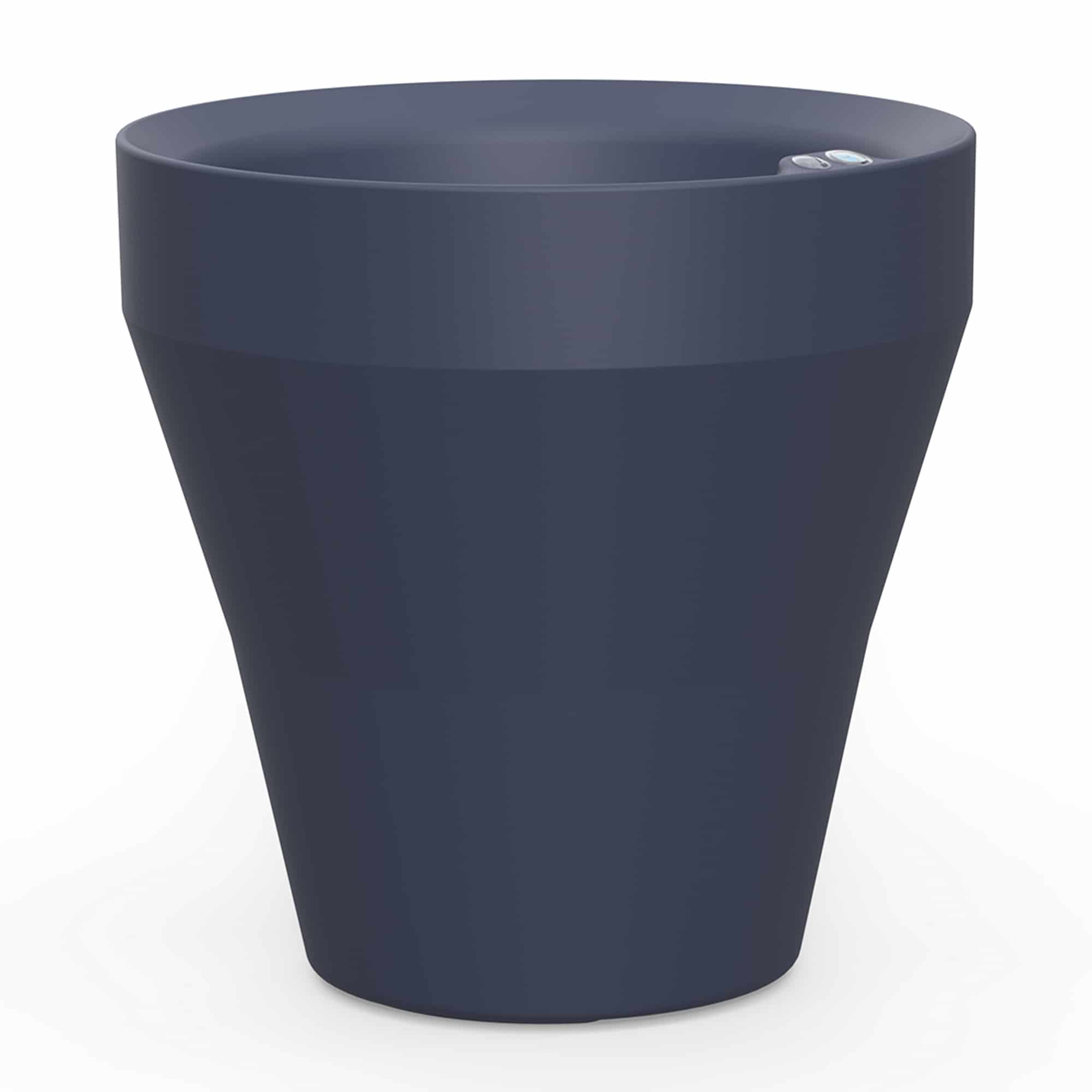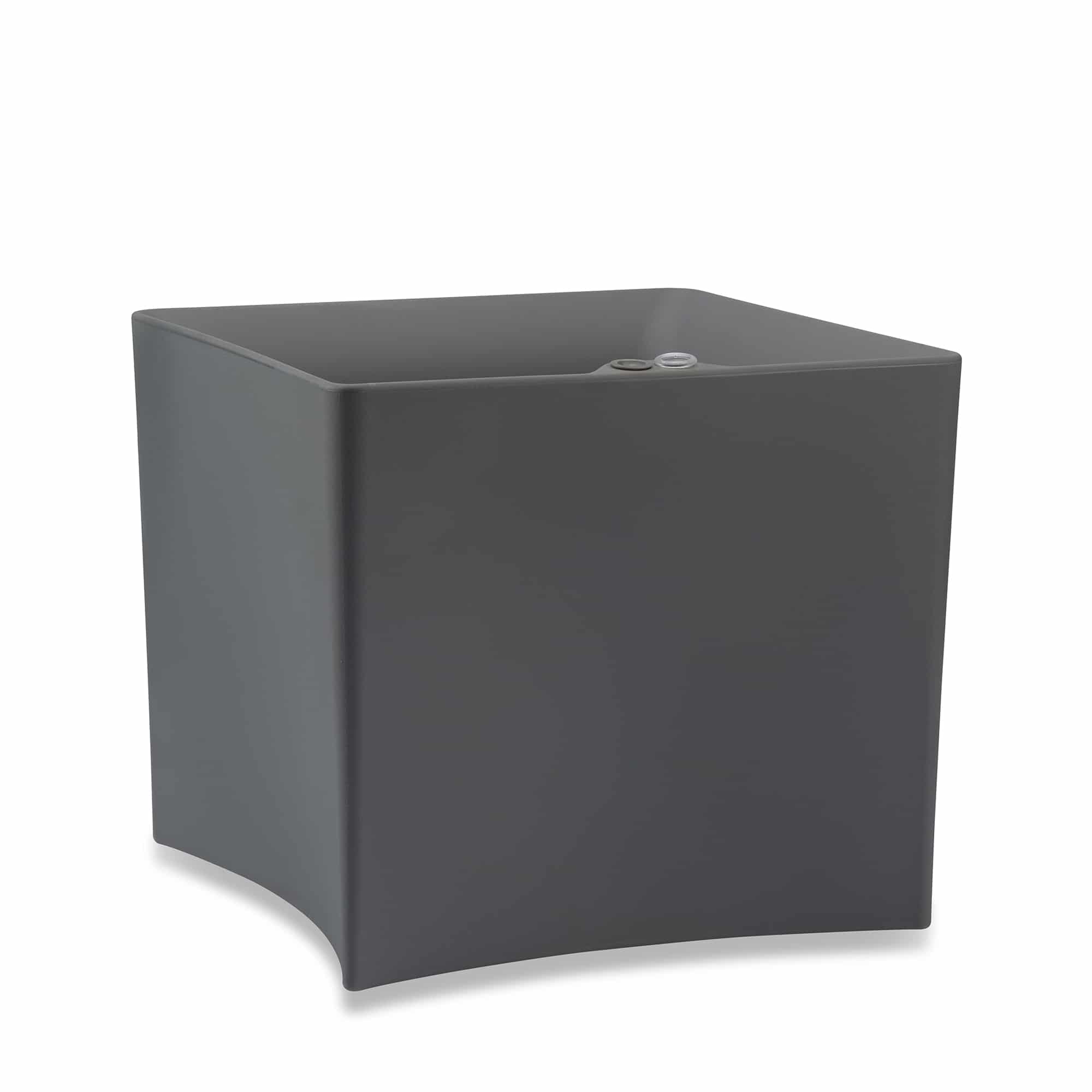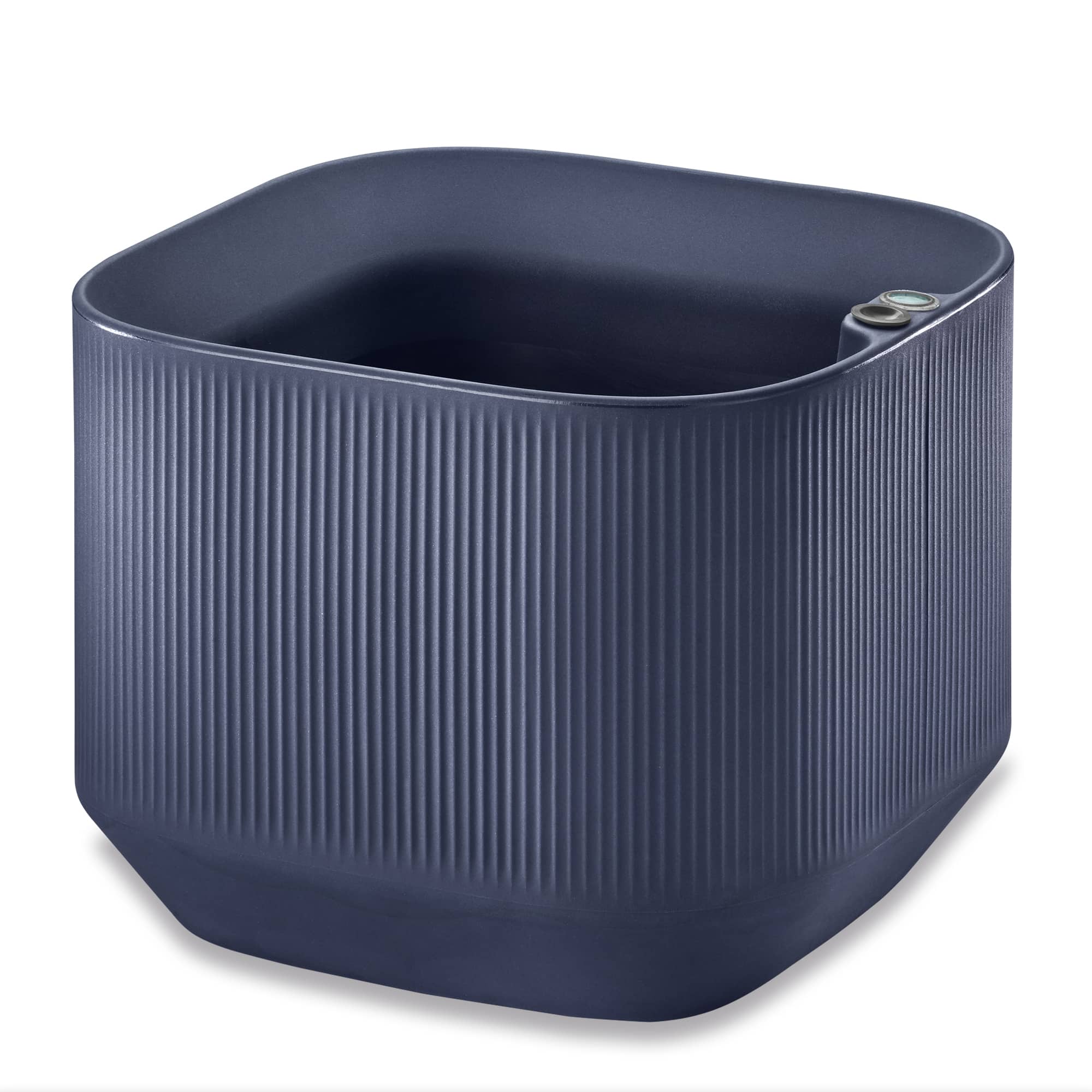You asked, we answered. We took all the frequently asked questions on self-watering planters and answered them for you.
How do self watering planters work?
There are many different types of self watering pots in the marketplace and they all work differently. Traditional self watering planters will use small reservoirs at the bottom of the planter to keep a bit of extra water for the plant. They might also have rope wicks or other elements that are supposed to help get the water from the reservoir to the root of the plants. Some even require volcanic rock or porous pebbles at the bottom of the planter to hold additional water. Some have indicators that work based on water displacement and floaters to show you when the reservoirs are full.
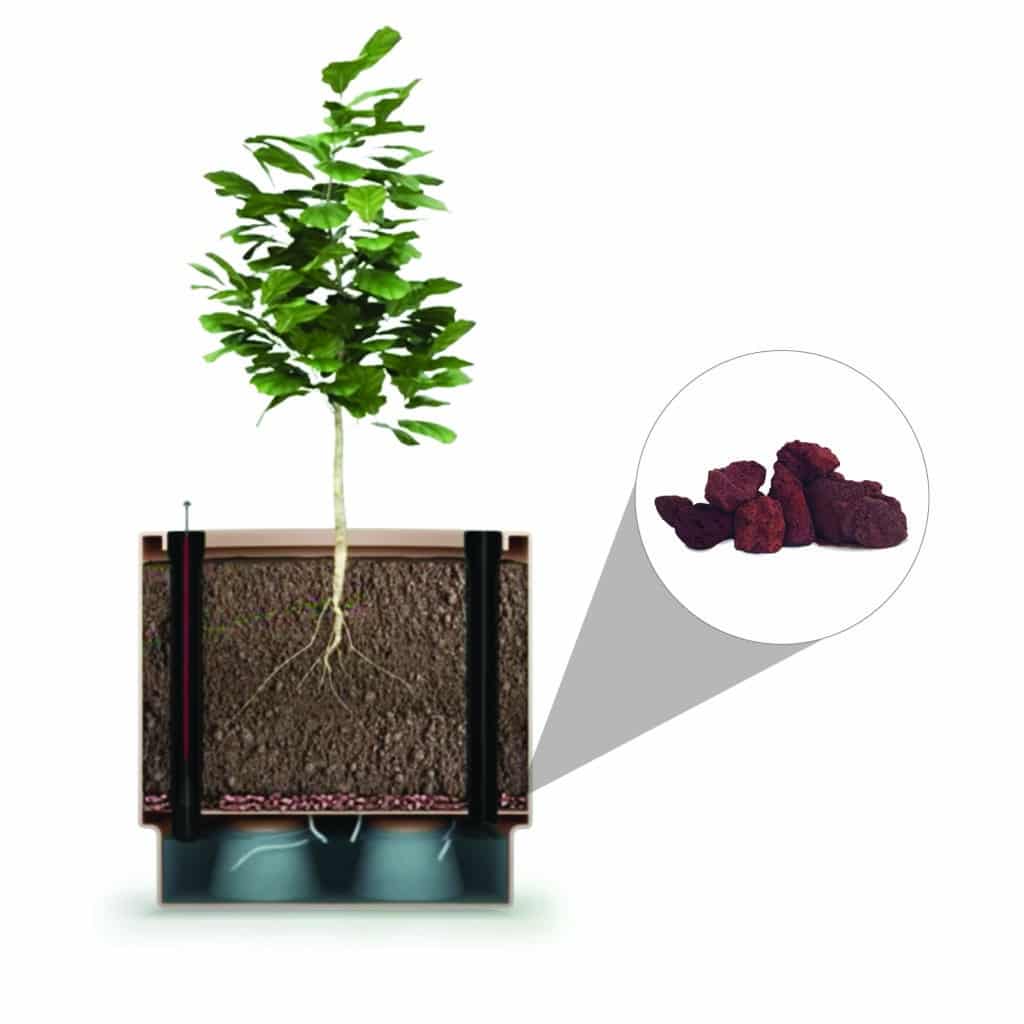
Rope wicks and volcanic rocks are used in self watering pots to help maintain water reservoirs.
Our TruDrop self watering pots with their patented design work a bit different. They have a double wall construction that allows for a very large water reservoir that contains between 2 gallons to over 50 gallons of water inside depending on the size of the planter. The inside wall is shaped with staggered levels that have perforations; this inner cone like shape serves as a wick to make sure the potting mix in the container receives all the water it needs and can hydrate plant roots. Because this cone is large, there is no “training of roots” as often is described in traditional containers to have roots find the water reservoir. It is only required to top water initially and then water from the intake hole. This is one of the best features in TruDrop self watering pots because roots determine how much water they need instead of people; water thirsty plants you will find will grow down to be closer to the main water source while others may remain slightly higher in dryer soil.
In addition, TruDrop self watering have features that help you grow better like an indicator that shows multiple levels to give you a warning before water is depleted, an overflow drain that can be capped for indoor use or left open to allow excess rain water to run out, and a drain plug that allows you to empty out the water easily when needed to move the planter.
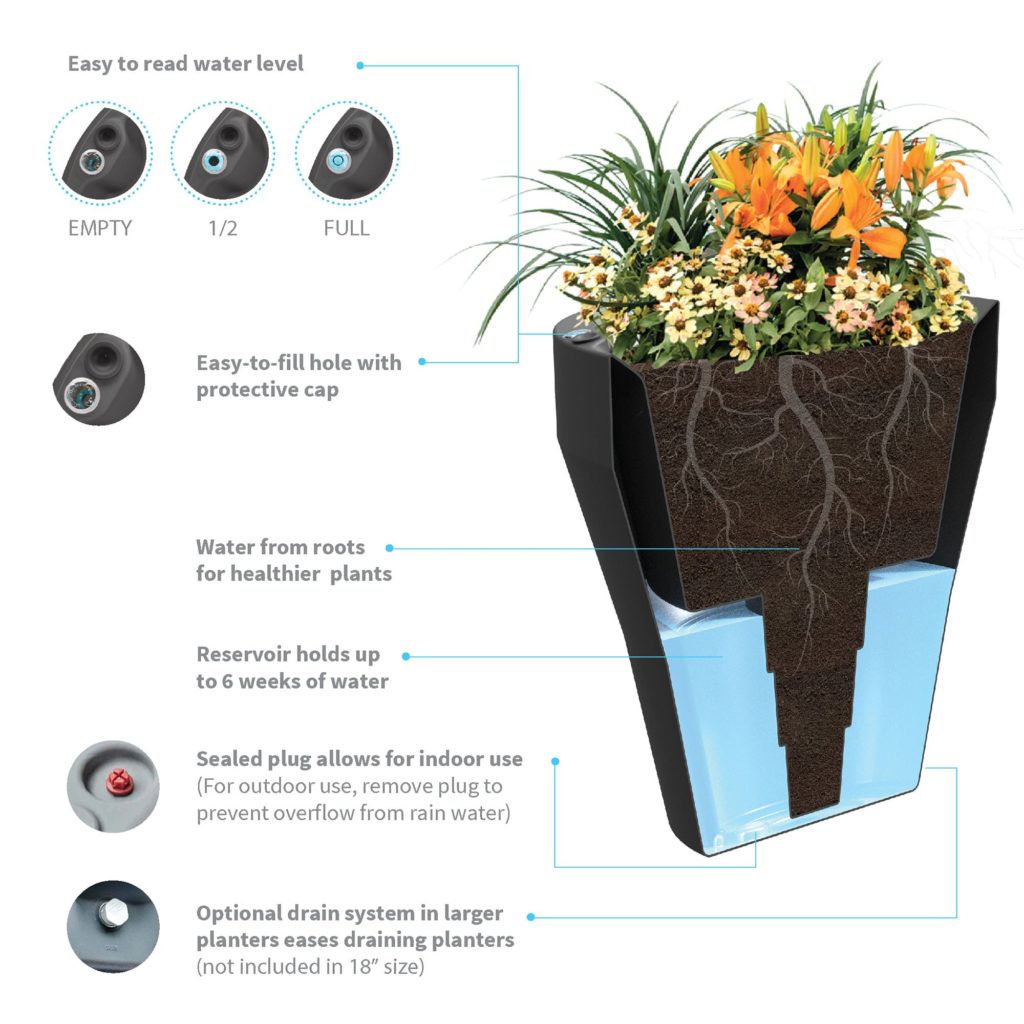
TruDrop containers are equipped with features that help your plants grow better.
How to fill self watering pot?
Many self watering pots just require you to top water just like any container until water gets to the reservoir. TruDrop self watering planters have a water in take hole that has a removable, tethered cap. To fill the planter you just need to open the cap, use a hose or watering can and watch the indicator until the planter is full. If using outdoors you will also see water come out through the overflow hole at the bottom of the planter letting you know it is full.
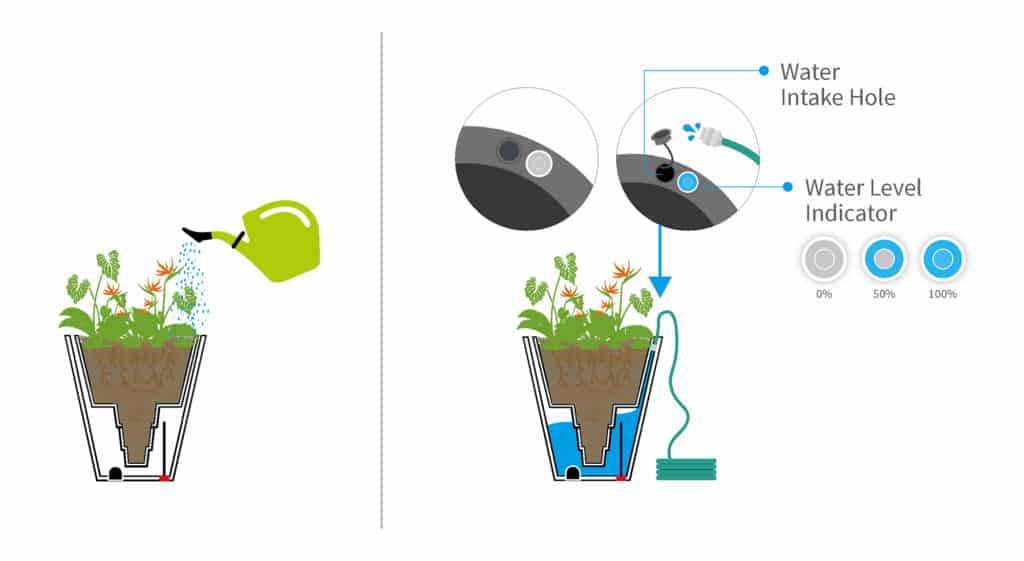
With TruDrop planters watering is as easy as filling your water in take hole.
Do self watering planters need drainage holes?
Outdoors all planters should always have a drainage hole or water drain. After all when it rains you don’t want excess water to collect in your pot and have your plants float. For this reason all our TruDrop self watering containers have an overflow drain built in to the bottom. Indoors this drain can be capped however our indicator will show you when the reservoir is filled to avoid over watering. Traditional self watering planters often have indicators to let you know when they are full. This is an important feature in any self watering planter.
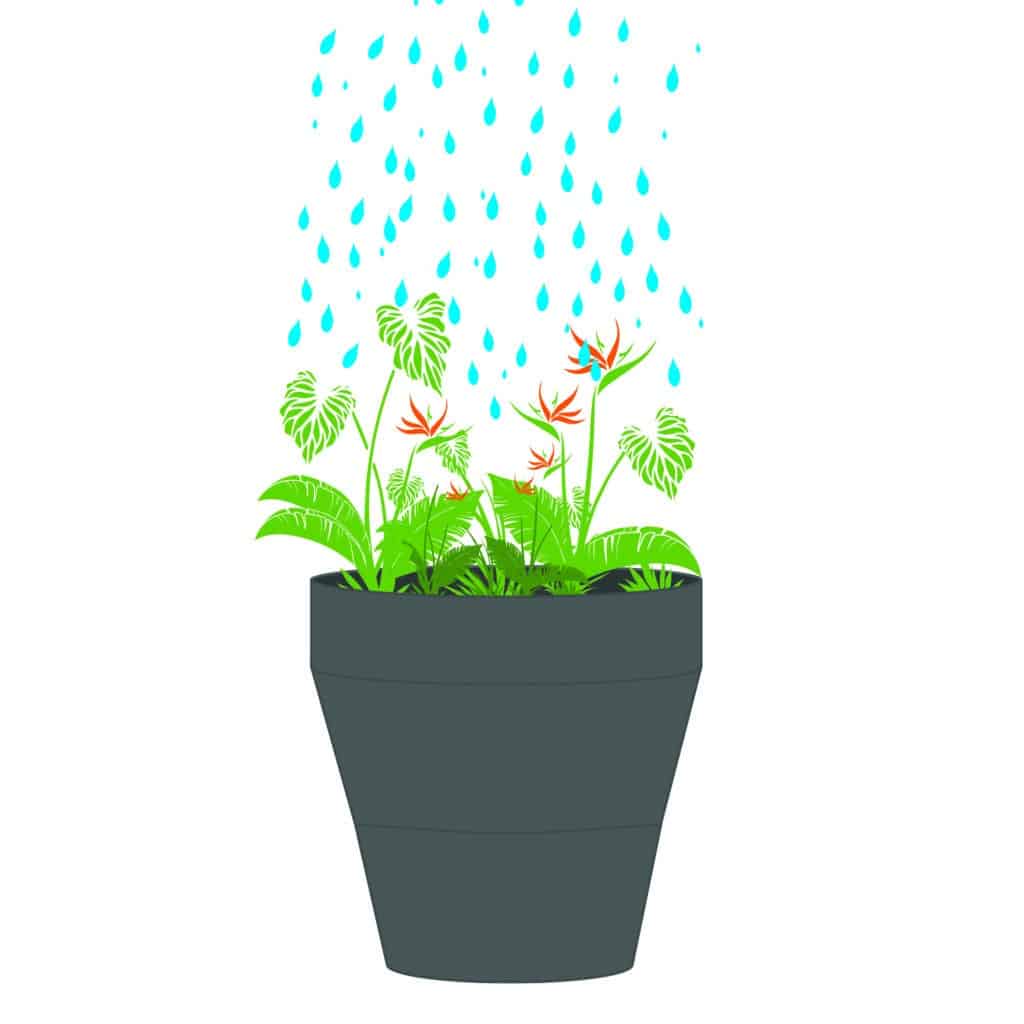
The TruDrop overflow drain works as a drainage hole to avoid overwatering.
Are self watering planters good for plants?
Plants have many important requirements to keep healthy like access to light and nutrients, but one of the most important requirements and the one that can probably be the culprit for killing most planters in containers is water. Many people under water or over water planters. Self watering containers are a great way to avoid under watering plants as they always have a reservoir in case you forget. TruDrop self watering is also great at avoiding over watering. By watering through the root system instead of top watering, plants are less susceptible to fungus, and disease but also the roots determine how much water they need instead of people fomenting healthier growing and healthier plants.
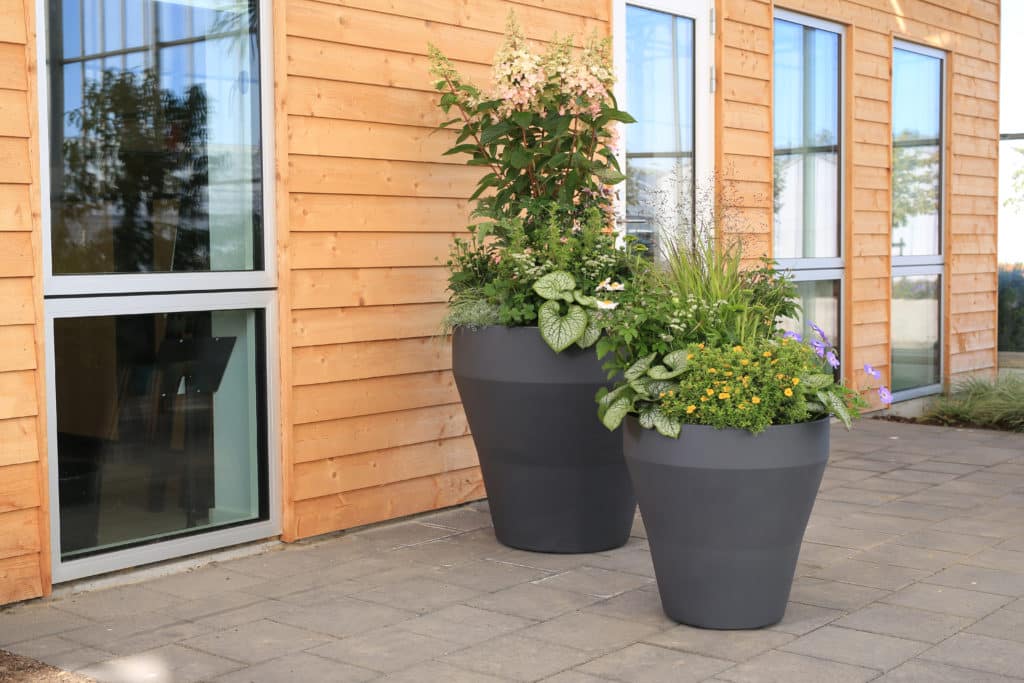
TruDrop containers take the guessing out of watering.
Are self watering planters worth it?
When evaluating the “worth” of any purchase it is always important to understand what it can do for you. We developed TruDrop self-watering to help people grow better, more successfully in containers. Our self watering planters can go weeks without watering, even outdoors in full sun. We believe the best way to quantify their worth is the time savings. A traditional 20 inch planter outdoors with annuals during a hot summer requires to be watered twice a day, the equivalent TruDrop self watering planter will last at least a week without watering. So how much is your time “worth”? If you are looking at using these commercially, how much is your employee’s time? Once you do the accounting you will find that you might enjoy doing other things in your garden, or else where instead of watering. Do remember as you research self watering planters not all are created equal and it depends on how they work, and how much water they contain, how efficient you will be. If you are an individual that actually doesn’t mind watering, then consider the environmental impact of using a self watering pot like TruDrop that will collect rain water, require much less water, and save in the use of fertilizers.
Do self watering planters cause root rot?
Root rot can be caused by many different things such as overwatering, fungus in the soil or poor drainage in a planter. Self watering planters do not cause root rot unless they are designed in such a way that they don’t drain properly. TruDrop self watering planters are designed with an overflow drain for outdoor use that allows excess water to escape from the planter especially when it rains but even when watering. It also includes an indicator let’s you know when the reservoir is full which is especially useful indoors to make sure you don’t over water. When using indoors if the plant you are growing doesn’t require a lot of water you may also choose to not fill the reservoir completely and leave only one indicator up on your container. To avoid root rot in any planter it is important to use good container potting soil. If you for example use regular garden soil it is too dense and will hold too much water. For more information on soil here is our Garden Story on the subject.
Are self watering pots good for fiddle leaf figs and other indoor plants?
When some of the first self watering planters started in the marketplace they were designed specifically for indoor plants so they definitely work for indoor plants. Many houseplants are tropical outdoor plants that thrive with a lot of water so giving them access to a reservoir works well. TruDrop self watering planters can work well indoors and outdoors. The nice thing is that the reservoir doesn’t need to be completely filled all the time and the water remains at the bottom so plants can determine how much water they need on their own. Fiddle Leaf Figs, are a ficus that has a a thriving root system. We find they grow very well in TruDrop and get very large and tall when the reservoir is filled and they have access to a window.
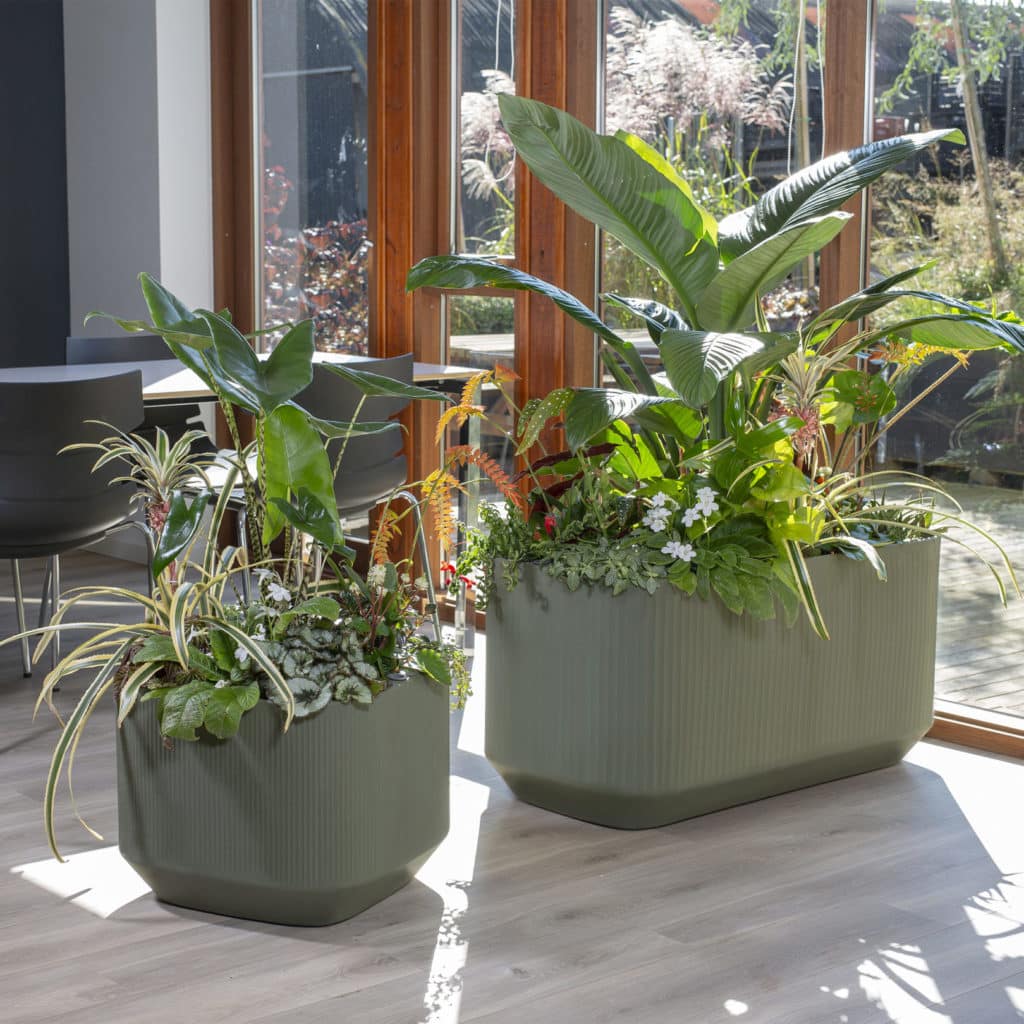
Access to a water reservoir and a window will do wonders for houseplant growth.
Do self watering outdoor pots work?
Not all self watering pots work outdoors. There are some very key features that you want to look for in a container that is going outdoors. We designed our TruDrop containers to be successful outdoors and they include an overflow drain to make sure excess rain water can get out; our planters have a large reservoir to make sure that the user can extend weeks between watering and the reservoir; additionally the shell on our planters have a 10 year warranty allowing you to have outdoor planters season after season. We only recommend that in freezing temperatures the main drain is left open so that there is no freezing of water in the reservoir.
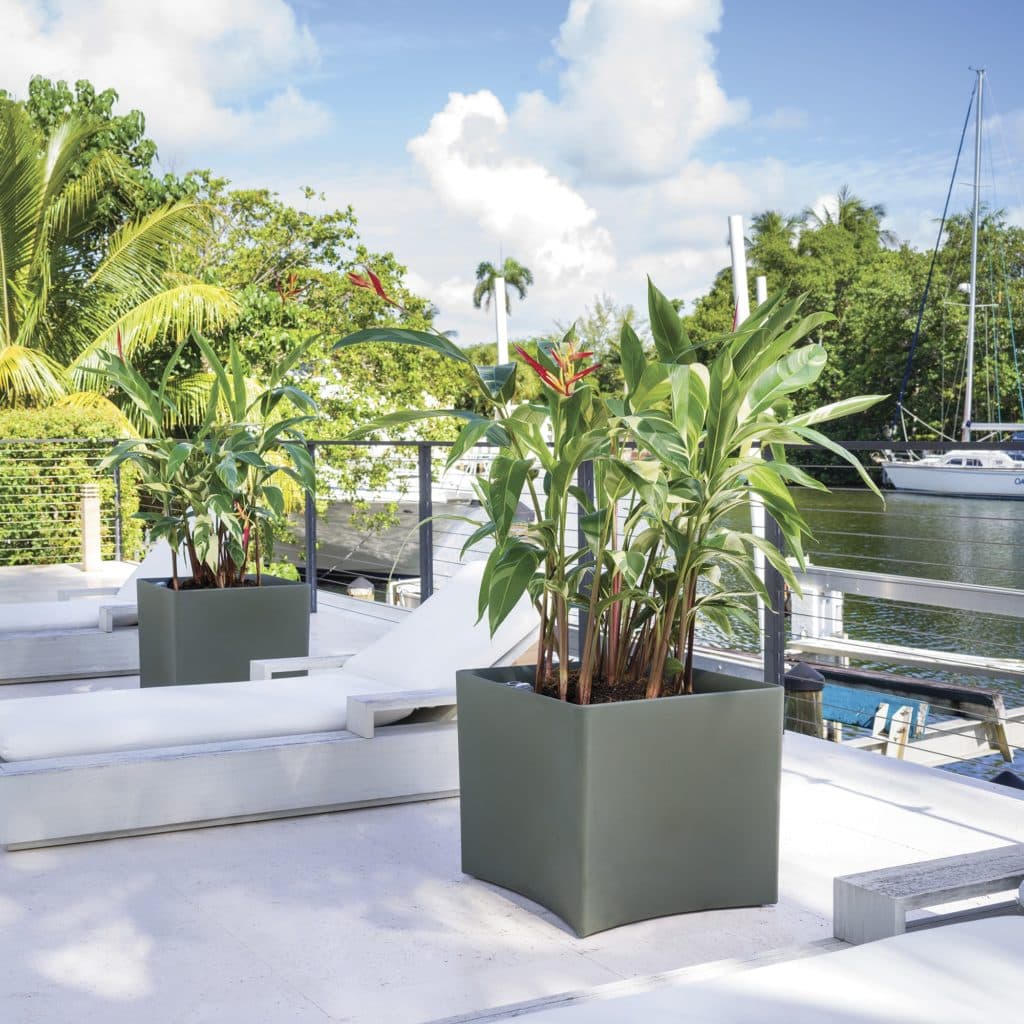
With a 10 yr warranty and large water reservoir, TruDrop planters will ensure your plants thrive outdoors.


